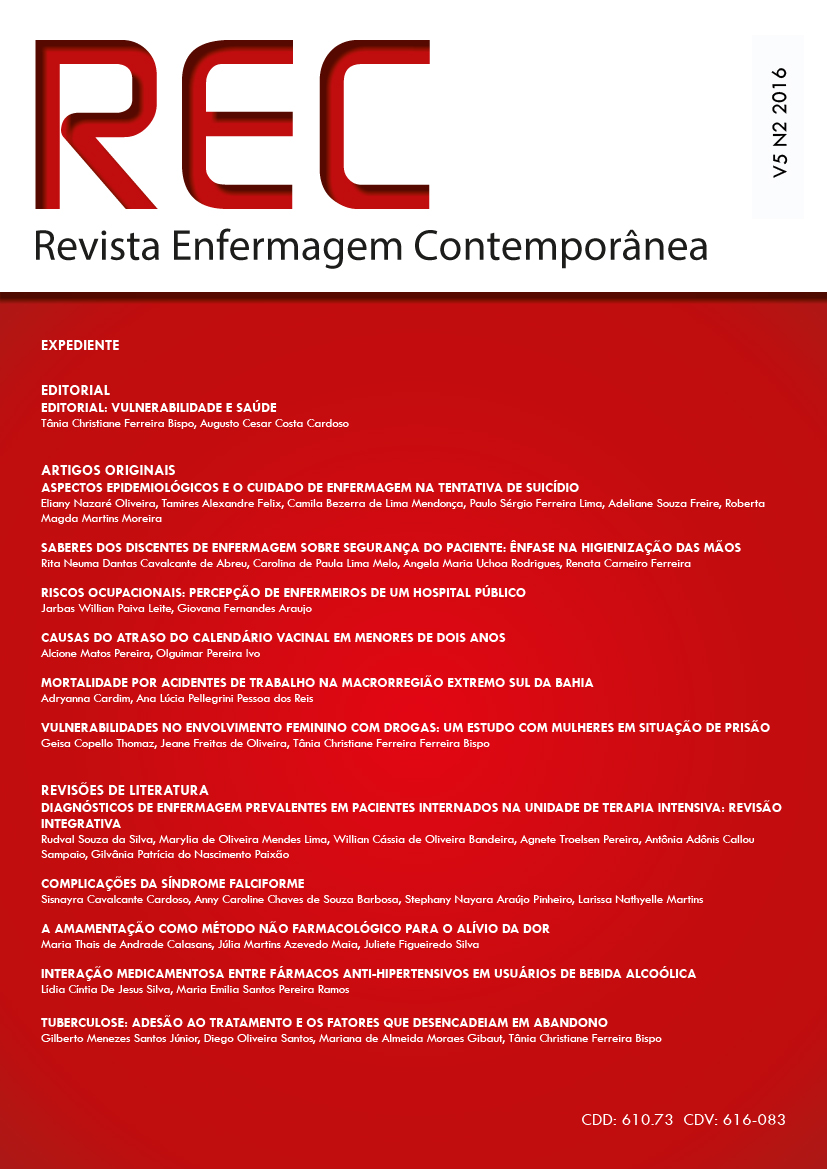PREVALENT NURSING DIAGNOSIS IN PATIENTS HOSPITALIZED IN INTENSIVE CARE UNIT: AN INTEGRATIVE REVIEW
DOI:
https://doi.org/10.17267/2317-3378rec.v5i2.1023Keywords:
Processos de Enfermagem, Diagnóstico de Enfermagem, Unidades de Terapia Intensiva.Abstract
The nursing diagnosis is the result of a process of gathering and interpreting the complaints from patients employing clinical judgment of data collected in the investigatory step, directing the critical thinking and clinical assessment by the nurses. Objective: to identify the prevalence of nursing diagnoses in assisted patients in the ICU. Method: it’s an integrative review, of exploratory and descriptive nature and the data were collected in the databases LILACS and SciELO resulting in a final sample of 11 studies that made up the corpus of the research. Results: those 11 studies were analyzed and in them 91 nursing diagnoses have been identified. A Concordance Index (IC ? 0.60) for analysis was established and only prevalent nursing diagnoses that have achieved IC have been taken in consideration for analysis, resulting in a total of 10 prevalent nursing diagnoses: risk of infection, excessive fluid volume, risk of aspiration, impaired skin integrity risk, impaired skin integrity, impaired physical mobility, decreased cardiac output, intimate hygiene and self-care deficit, ineffective breathing pattern and ineffective clearance of the airways. Conclusion: it was possible to observe that in the context of intensive care are more prevalent the actual diagnosis than those of the risks. With the identification of the prevalence of nursing diagnoses it was possible to trace the clinical and epidemiological profile of patients admitted to an ICU.Downloads
Download data is not yet available.
Downloads
Published
11/01/2016
Issue
Section
Literature Reviews: Systematic, Integrative or Scoping Review
How to Cite
1.
Silva RS da, Lima M de OM, Bandeira WC de O, Pereira AT, Sampaio AAC, Paixão GP do N. PREVALENT NURSING DIAGNOSIS IN PATIENTS HOSPITALIZED IN INTENSIVE CARE UNIT: AN INTEGRATIVE REVIEW. Rev Enf Contemp [Internet]. 2016 Nov. 1 [cited 2025 Dec. 14];5(2). Available from: https://journals.bahiana.edu.br/index.php/enfermagem/article/view/1023



